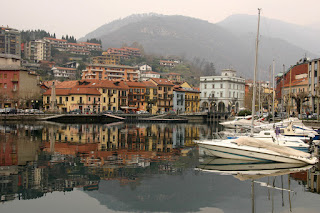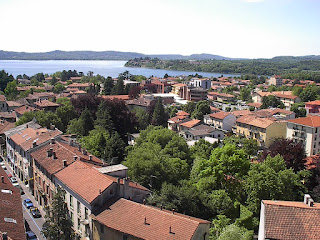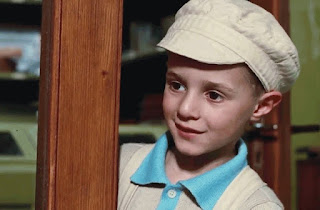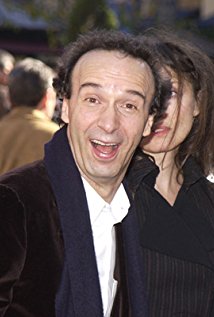Italian’s discovery sparked Fairbanks Gold Rush
 |
| Felice Pedroni, a photograph taken in Alaska in the early 20th century |
In July 1902, on or around the 22nd, Pedroni discovered gold in the Tanana Hills northeast of the fledgling town of Fairbanks, Alaska in a small, then unnamed stream (later to be called Pedro Creek).
Some claim that Pedroni was the prospector who, on his return to Fairbanks from his prospecting mission, uttered the famous words "There's gold in them there hills", although there are other accounts of where the phrase originated.
What does not seem to be disputed is that Pedroni’s discovery triggered what became known as the Fairbanks Gold Rush as more than 1,000 other gold diggers flooded the area.
Brought up in a family of subsistence farmers in Trignano, Pedroni was the youngest of six brothers. He left Italy in 1881 after the death of his father. He moved first to France, then took the bold decision to board a steamship to America.
After disembarking in New York City, where he was registered as Felix Pedro, he found work as a labourer but, having heard about the gold in Alaska and was determined to get there. As soon as he had saved enough money, Pedroni moved on, first to Ohio, then Washington State, British Columbia and Yukon, each time taking a job and biding his time until he could afford to move on. He became an American citizen in 1888.
 |
| Fairbanks quickly developed as a city with the wealth generated by the gold rush sparked by Pedroni's find |
Despite marking the spot and searching for it for the next three years, they were unable to find it again.
It was while trying to locate the creek that they were drawn to the camp that would become Fairbanks after seeing plumes of smoke from a steamboat. They dropped down from the hills above the settlement, stocked up with supplies and returned to their search.
This time they did find gold, in the Tanana Hills, northeast of Fairbanks.
Pedroni died in July, 1910 at age 52 at St. Joseph's Hospital in Fairbanks - which by then had grown rapidly to be the largest city in Alaska - reportedly of a heart attack.
This was later disputed by business partner Vincenzo Gambiani, who suspected Pedroni's Irish wife, Mary Ellen Doran, of poisoning him.
| The inscription on Felice Pedroni's simple grave in Fanano, the town near his birthplace in Emilia-Romagna |
By contrast, Mary Doran was said to be a saloon girl of loose morals. Gambiani believed she killed Pedroni so that she might inherit his fortune.
Pedroni’s body was initially shipped to Colma, near San Francisco, to be buried, which is where it remained until October, 1972, when it was found, exhumed, and moved to Italy to be re-interred in Fanano. First, however, some hair samples were tested, the results of which reportedly supported the theory that Pedroni had been murdered.
Today, Pedroni is remembered in Alaska as one of the founding fathers of Fairbanks. In 1947, the Felice Pedroni Monument was erected on the Steese Highway north of Fairbanks, near what is still known as Pedro Creek. The annual Fairbanks Golden Days celebration always begins with a rededication of the monument.
 |
| The countryside of the Valle di Ospitale, close to Fanano in the Frignano regional park in Emilia-Romagna |
Fanano is a town of some 2,500 inhabitants within the Regional Park of the Modenese High Apennines, otherwise known as the Frignano regional park, a rich and colourful natural area of lakes and mountains maintained for the growth and preservation of rare species, animals and plants. The park covers 15 thousand hectares, rising to a height of 2,165 metres (7,100 feet) at the summit of Monte Cimone. Among the several rare species to be found in the park are Alpine Marmots and Apennine Wolves. The area is popular for mountain biking, trekking and orienteering, and snow tracking in the winter. Fanano itself is close to the lakes of Scaffaiolo and Pratignano and the Passo della Croce Arcana, an alpine pass at 1,669m (5,475ft) between outlying areas of Fanano and Cutigliano.
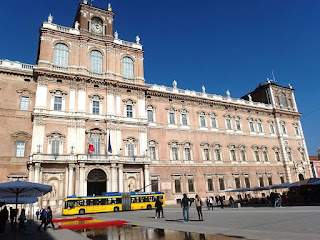 |
| The Ducal Palace in Modena, which dates back to 1635, was once the most sumptuous palace in Europe |
Fanano is just over 60km (37 miles) from the city of Modena, which is well known for a variety of reasons, as a centre of the car industry - Ferrari, De Tomaso, Lamborghini, Pagani and Maserati all have connections with the city - the home of balsamic vinegar, and the birthplace of the great tenor, Luciano Pavarotti. One of the main sights in Modena is the huge, baroque Ducal Palace, which was begun by Francesco I d’Este, Duke of Modena, on the site of a former castle in 1635. His architect, Luigi Bartolomeo Avanzini, created a home for him that few European princes could match at the time. The palace is now home to the Italian national military academy. In the Galleria Estense, on the upper floor of the Palazzo dei Musei in Modena, there is a one-metre high bust of Francesco by Gian Lorenzo Bernini.
More reading:
The Italian origins of San Francisco's Ghirardelli Chocolate Company
How Gaetano Merola founded the San Francisco Opera
Carlo Camillo di Rudio - the Italian aristocrat who fought in the Battle of Little Bighorn
Also on this day:
1118: The death of Adelaide del Vasto, Countess of Sicily
1839: The birth of politician Antonio Di Rudini, twice Italy's prime minister
1881: The birth of magazine artist Fortunino Matania
Home








